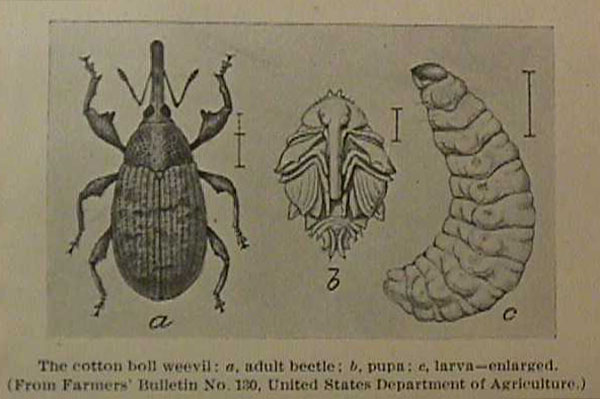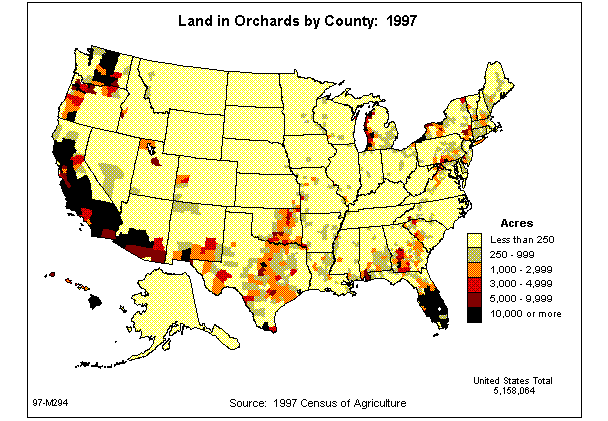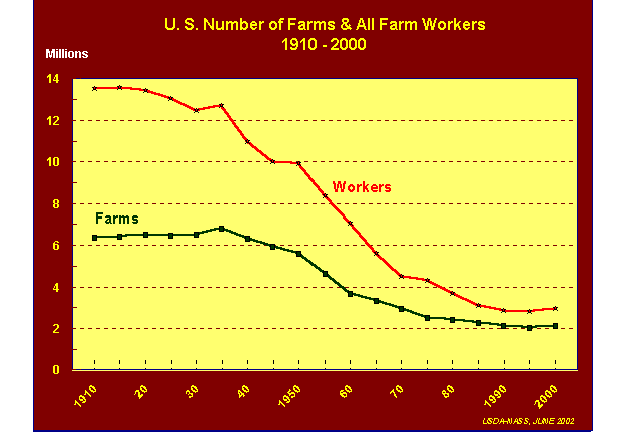|
GIANT 41, TED 718, 2004 by Ruth Bryant |
Georgia Peach
|
General
Information |

I.Identification
1. The Issue
What makes a peach a Georgia Peach? The U.S. state of Georgia is known for many fine products, but the most famous and possibly the most beloved is the peach. However, the industry is threatened by peaches that can be produced more cheaply elsewhere. It is simply not as profitable to grow peaches in Georgia (or the rest of the U.S., for that matter) as it once was.
Will the U.S. peach industry be crushed by a strong dollar that makes American products more expensive in foreign markets? Will foreign markets be opened sufficiently by World Trade Organization (WTO) rulings for American peaches to be competitive in foreign markets? Will innovative marketing, efficient farming, and product diversity save the day? Or will high input costs (the cost of water, fertilizer, labor, etc), restricted foreign markets, and low commodity prices decimate rural industry in Georgia?
2. Description
Peaches originated in China. The peach tree actually belongs to the same family as the rose, and early peaches were small, tart, very fuzzy, and had more pit than fruit.
In Chinese folklore peaches are associated with magical taoism, with luck and immortality. Peaches are still a traditional birthday gift in China. Peach trees were grown near the doors of rural dwellings and became nearly as popular as the plum. Traders along the Silk Road brought versions of the primitive version of the peach to Arabian gardens. Gardeners in Asia continued to refine the taste and appearance of the peach until there were cling peach and loose stone peach varieties that grew to roughly the size of a human fist. Peaches were popular in Europe but like their cousin the rose, did not flourish in the cool, damp climates as well as they later would in the New World.
![]()
The peach industry in Georgia really took off during the reconstruction phase after the American Civil War, when the emancipation of the slaves and other factors caused planters to seek to diversify crops. The famed pecan, the vidalia onion, and the humble apple joined cotton as cash crops in Georgia. The idealism of Georgia's founders (who at first wished to prohibit lawyers, slaves, Catholics, and liquor from entering the colony) as well as the bounty of the land led natives to view Georgia peach country as a kind of Eden. The view can still be witnessed on crates of peaches with Bible verses printed on the side. The peach became a cash crop in the 1870s because of a tiny insect called the boll weevil, which decimated cotton crops, causing a dire need for agricultural diversification.

In the 1880s Elberta and Georgia Belle were the first two varieties of peach to be developed in Georgia. The countryside had been groomed for agricultural production long before the land was re-distributed in 1940 for Franklin Roosevelt's New Deal Agriculture Adjustment Administration. The program created subsidies for the sale of land designed to increase the percent of the population that owned land in the Southern states. The intended effect was to decrease the gap between the rich and poor but a side-effect was the necessity of growing crops like the peach that would produce a high yield in a small space.
Today Georgia grows over 40 varieties of peach commercially. Although Georgia is called the Peach State it actually ranks third in production behind California and South Carolina. Peaches are grown south of Macon county, north into the upper Piedmont, from Jackson City to Floyd. In 2001, the Georgia peach crop reached 140 million pounds and brought in $35 million dollars. (Courtesy University of Georgia.) Because of infrastructure (such as trains, highways, packing plants, refrigerated trucks, and atmospherically controlled warehouses) the U.S. exports peaches over the greatest area of the world. China produces the largest amount of peaches according to hectares of peach orchards but around 70% of China's fresh peaches are exported to Japan. China currently has limited storage and packing facilities.
Peaches were among the many products that were intended to help the South not to be so reliant upon cotton, and to create a source of funds so that the South could be rebuilt after the Civil War. Today there is a diagonal band of territory running through the heart of Georgia where first cotton plantations and now orchards and diverse crops exist. Train tracks and highways were created to serve the agricultural industry in Georgia. Fresh agricultural goods could be easily transported from farms to packing and storage facilities near Atlanta, and from there throughout the country. Special padded containers and warehouses where the ratio of gases in the air is controlled so that the enzymes that cause decay in the fruit are not activated help U.S. farmers get a high percentage of fruit from the orchard to the market. Georgia used capital gained from its agricultural industry to encourage investments in technology and infrastructure. Now, the South is developed and flourishing around Atlanta, Georgia. The demand for peaches has not decreased (if anything it has increased) but the fruit is no longer as necessary to the Southern economy as it once was.
Dole Food Company, Inc. is the world's largest producer and marketer of fresh fruit. The company employs, on average, 33,000 full-time permanent employees and 24,000 full-time seasonal or temporary employees worldwide. The company is currently focusing on value-added products such as fruit bowls. Peaches are not a major part of its business.
Each country in theWorld Trade Organization (WTO) has agreed to specific levels of tariffs for fresh peaches or nectarines, preserved peaches or nectarines in airtight containers, and other forms of prepared peaches or nectarines. Certain countries, most notably Chile and Argentina, have claimed that the U.S. has unfair tariffs on peaches. The WTO has has already ruled that safeguard duties on peaches broke WTO rules. The WTO also quarentines certain fruit because of pests that countries can put on a quarentine list.
3. Cases Similar to the Georgia Peach Study: GIANT project
4. Author and Date:
Ruth Bryant and Jim Lee. 2004.

II. Legal Clusters
5. Discourse and Status: Disputes in progress.
Argentina lost a dispute at the World Trade Organization (WTO) when a panel ruled that safeguard duties on imported peaches violated WTO rules, namely the Safeguards Agreement and the General Agreement on Tariffs and Trade (GATT). California peach growers have been fighting EU subsidies to Greece on canned peaches since 1996 when prices for U.S. peaches increased sharply due to a crop severely damaged by late frosts. The loss U.S. farmers suffered was made worse by cheap imported peach products that allowed prices for peaches to remain the same in spite of the shortage of U.S. peaches.
6. Forum and Scope: U.S., EU, Chile, Argentina, and multilateral organizations.
Since about 5% of a peach crop is consumed fresh while the other 95% is preserved or processed in some way, countries that have the ability to not only produce and transport but also to preserve the most peaches are the ones that can sell the most peaches.
The amount of effort it takes to transport and process peaches is quite astounding. In the U.S., refrigeration, atmospherically controlled warehouses, special containers, and complex tracking systems are used. Processing plants are located near train stations and highways in Georgia, and near ports in South Carolina. China is the largest producer of peaches by hectares, but must ship most of the crop to Japan to be processed. Greece, with its tradition of enormous orchards (one Greek olive orchard is the largest orchard in the world) and its equally enormous subsidies from the EU, is currently the world's largest producer of canned peaches.
7. Decision Breadth: World Trade Organization
8. Legal Standing: Decisions pending.
![]()
III. Geographic Clusters
9. Geographic Locations
a. Geographic Domain: Southeastern North America
The state of Georgia is the easternmost state bordering the peninsula of Florida.



